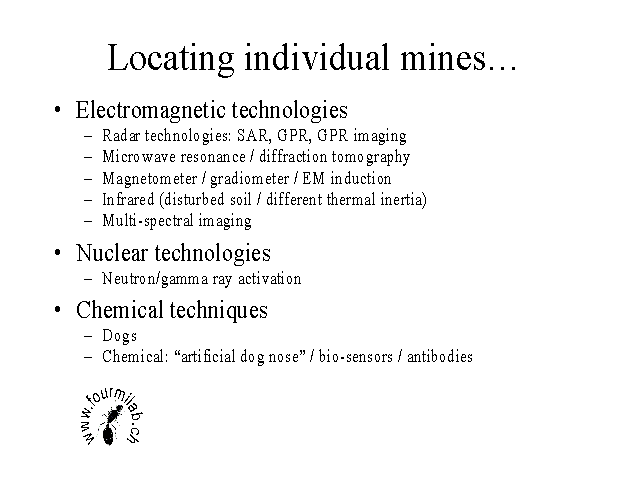

|
|
|
Many technologies are being explored for detecting and characterising buried mines. Each has shown promising results under certain circumstances, but none has, as yet, emerged as a location technology applicable in all circumstances.
All of the electromagnetic technologies attempt, in various active and passive manners, to discriminate the material in the mine from the medium in which it is buried. Variations in soil, the wide variety of mines, and the unfortunate fact that the longer waves which best penetrate the soil provide the least spatial resolution have, so far, prevented any of these technologies from emerging as an all-purpose mine locator. It is possible that further development of these technologies, or sensor fusion of two or more may provide a useful detector.
Nuclear techniques detect the explosive in the mine by irradiating it and measuring the signature of the secondary radiation emitted by explosive compounds. Nuclear magnetic resonance requires strong magnetic fields and sensitive detectors which are difficult to operate in field conditions. Nuclear activation techniques require radioactive sources or accelerators which may face public opposition. All nuclear techniques are prone to false positives due to contamination of the field by the residue of exploded munitions.
The only explosive detection technology deployed in the field today is dogs, which have proven useful in detecting the odor of mines buried as long as 8 years before. Dogs can detect explosives, but nobody knows precisely what they detect or how—many believe they smell the binder rather the explosive itself. Dogs have a short attention span, and need to be run by skilled handlers who understand the limitations of the animals. Dogs can and do play a useful role in mapping the extents of a mined area, but are less useful in locating individual mines.